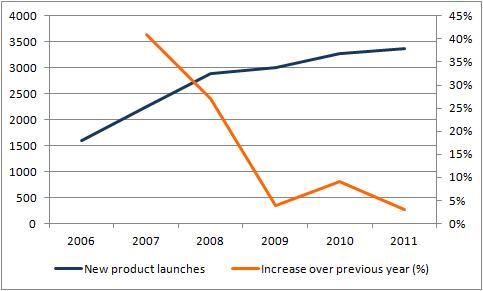Innovative products with improved tastes and flavors coupled with increasing attention towards the health benefits of whole grains and a high fiber diet are driving market growth, according to the Whole Grain and High Fiber Foods report from Global Industry Analysts.
“Whole grains emerged as the focus area for food manufacturing companies, with food and beverage companies having adopted whole grains as a major strategy for revitalizing their products and brands,” said GIA.
“By providing whole grain products that provide long-term health benefits, food companies are allowing consumers to make a transition towards healthy diet.”
Stats
According to the Whole Grain Council, as of March 2012 the Whole Grain Stamp is included on the label of over 6,600 different products on 35 different countries.
Whole grain consumption has increased 20% from 2005 to 2008, according to data from consumer researchers NPD Group. The greatest increase has been seen in the Millenials (people aged from 18 to 34) with consumption rising 38% during the same period.
Data from Mintel’s Global New Products Database (GNPD), there were almost 20 times as many new whole grain product launches in 2010 than in 2000. Indeed, the number of new products launches has been steadily increasing (blue line on graph below). In 2006, 1601 products were launched, says the GNPD, while there were 3378 launches in 2011.

Regions & products
While the US constitutes the largest regional market for whole grain and high fiber foods, Asia-Pacific represents the fastest growing regional market, displaying a compound growth rate of 6.82% through 2017, says the report.
In terms of the product segments, bakery and breakfast cereals dominate, according to Mintel, with 1228 new whole grain bakery products and 1039 whole grain breakfast cereals launched in 2011, compared with 484 snacks (the next big segment).
Struggling to meet recommendations
Nevertheless, previous findings have shown that few Americans consume their recommended three servings of whole grains per day. Research organization the NPD Group found in 2009 that American consumption of whole grains was up 20 percent since changes to US dietary guidelines and the introduction of the Whole Grain Stamp packaging symbol in 2005, but whole grain consumption still stood at only 11 percent of total grain consumption. The 2005 Dietary Guidelines for Americans recommended that at least half of a person’s intake of grain-based foods should be whole grain.
As well as providing high levels of fiber, whole grains provide vitamins, minerals and antioxidants. They have also been shown to help reduce the risk factors for a number of diseases, including heart disease, cancer and diabetes, and to play a part in weight control.
